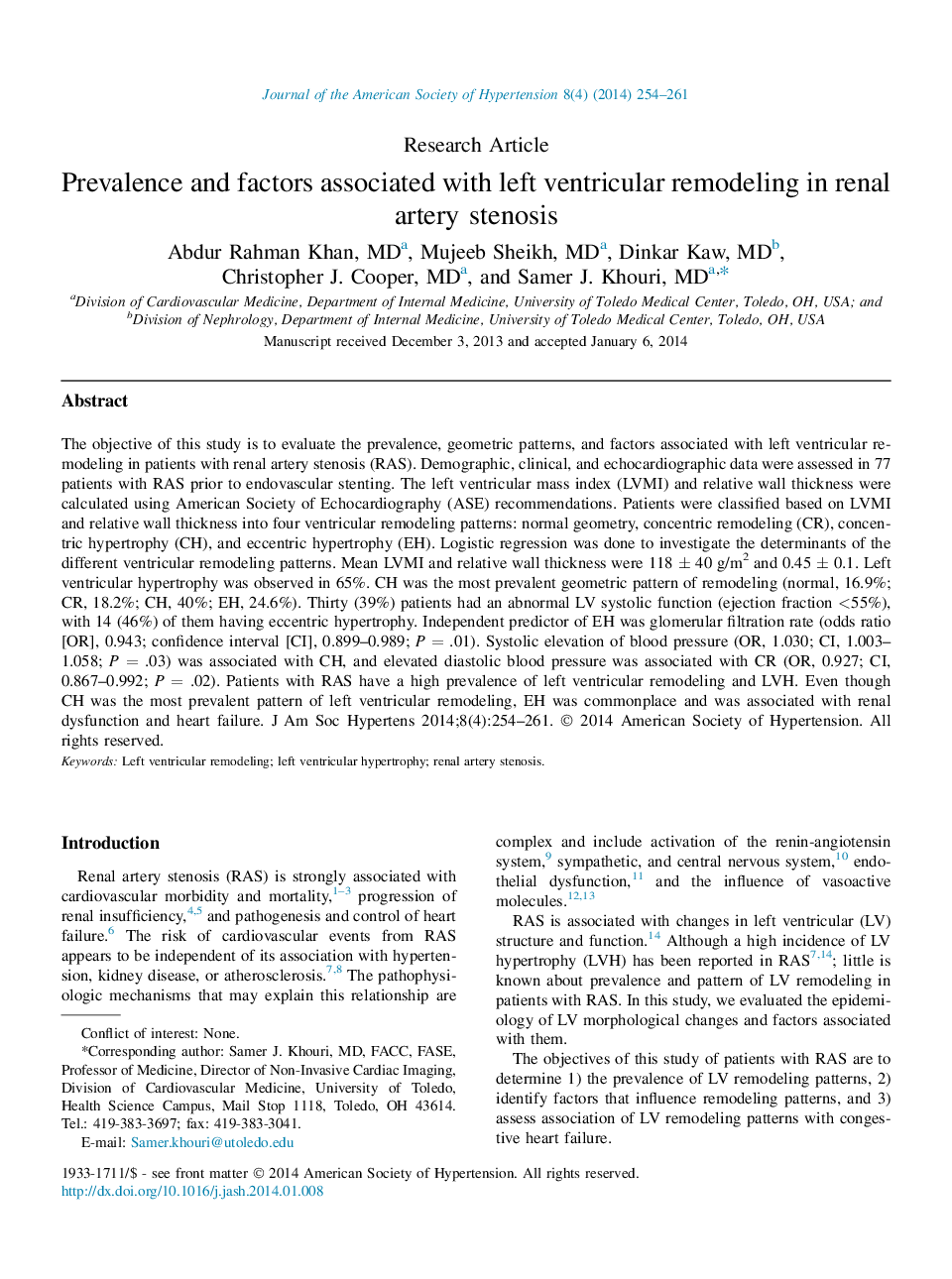| Article ID | Journal | Published Year | Pages | File Type |
|---|---|---|---|---|
| 2957116 | Journal of the American Society of Hypertension | 2014 | 8 Pages |
The objective of this study is to evaluate the prevalence, geometric patterns, and factors associated with left ventricular remodeling in patients with renal artery stenosis (RAS). Demographic, clinical, and echocardiographic data were assessed in 77 patients with RAS prior to endovascular stenting. The left ventricular mass index (LVMI) and relative wall thickness were calculated using American Society of Echocardiography (ASE) recommendations. Patients were classified based on LVMI and relative wall thickness into four ventricular remodeling patterns: normal geometry, concentric remodeling (CR), concentric hypertrophy (CH), and eccentric hypertrophy (EH). Logistic regression was done to investigate the determinants of the different ventricular remodeling patterns. Mean LVMI and relative wall thickness were 118 ± 40 g/m2 and 0.45 ± 0.1. Left ventricular hypertrophy was observed in 65%. CH was the most prevalent geometric pattern of remodeling (normal, 16.9%; CR, 18.2%; CH, 40%; EH, 24.6%). Thirty (39%) patients had an abnormal LV systolic function (ejection fraction <55%), with 14 (46%) of them having eccentric hypertrophy. Independent predictor of EH was glomerular filtration rate (odds ratio [OR], 0.943; confidence interval [CI], 0.899–0.989; P = .01). Systolic elevation of blood pressure (OR, 1.030; CI, 1.003–1.058; P = .03) was associated with CH, and elevated diastolic blood pressure was associated with CR (OR, 0.927; CI, 0.867–0.992; P = .02). Patients with RAS have a high prevalence of left ventricular remodeling and LVH. Even though CH was the most prevalent pattern of left ventricular remodeling, EH was commonplace and was associated with renal dysfunction and heart failure.
